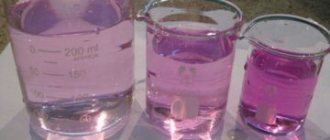How can an animal get burned?
In addition to tragic situations, such as a fire, a cat can suffer from a burn for simple, trivial reasons. A pet that gets too playful can lose control and get scalded on a heating device; a cat can also easily knock over a pot of soup, a frying pan with oil, etc. Young cats need to sharpen their teeth, sometimes during birth they come across live wires under their paws, as a result - electric shock and electrical burn. Cats are curious creatures. Therefore, try to hide possible sources of burns from them.
Of course, loving owners take all measures to prevent accidents, but, unfortunately, we are not able to foresee all the dangers. What to do if your cat gets burned?
In this article we will not talk about the treatment of burns, but about first aid, or pre-medical aid. Because in all cases of burns, except for the mildest ones, the cat needs to be examined by a doctor who can provide the necessary assistance and recommend subsequent treatment.
Degrees of burns in cats
First degree. The cat had a small area of his body burned. The burn site is swollen, red, and painful. Your pet may develop a fever.
The second degree is similar in symptoms to the first, only more pronounced. Plus, watery blisters may appear on the affected skin, which will then burst and crusts will appear in their place. If a cat's burn is too large, the animal will experience weakness and refuse to eat. Naturally, the animal will be in pain and its body temperature will increase.
The third degree is wounds covered with charred crusts. After a few hours, necrosis begins in the burn area. In addition to severe pain, the animal will receive internal intoxication. An increase in temperature and general poor health is inevitable.
First degree burns
The animal in the affected area of the body experiences: swelling, redness, pain, and a local increase in temperature. Possible causes: cat burn by boiling water or water with a temperature above 60 C°, short contact with fire or a hot surface, sunburn.
- Cool the affected area with water or a metal (spoon). It is not recommended to use ice - too much temperature contrast can cause pain, tissue rejection, and cracking.
- Treat the burn with a weak solution of potassium permanganate.
- It is advisable to treat with anti-burn ointment - Panthenol, Traumeel, Rescuer. As a last resort, sunscreen or universal cosmetic cream without impurities, Vaseline, will do.
- After emergency treatment, purchase a product to prevent infection of burns and treat the skin 4-5 times a day.
- The skin should be dry, with or without a thin crust. If small blisters appear on the surface of the skin, fluid is oozing, there is an odor coming from the burn - infection has begun - contact your veterinarian.
- If it is not possible to show the animal to a veterinarian, use Sangel or its equivalent, sprinkle the wound with streptocide powder - your task is to dry and disinfect the wound.
Important! The affected surface with a first degree burn does not need to be bandaged - friction can aggravate the situation. If the cat is actively licking the wound, use a “collar” - the burn should be dry.
Why are burns dangerous for a cat?
Healthy skin is a barrier that protects the animal’s body from environmental influences. The burned area loses its protective function - the risk of infection entering through the burn increases. In addition, this:
- pain;
- discomfort;
- disability.
If the burn covers a large area of the body - more than 15%, then there is no good prognosis for recovery; you will have to fight for your pet. If a cat's burn exceeds 50% of the total body area, then the animal will most likely die.
In addition to the skin, the pet can burn the oral cavity (electric shock when biting through wiring) and the upper respiratory tract (inhalation of acid steam, hot smoke). These types of burns not only bring significant discomfort to pets, they are actually life-threatening. For example, an animal may develop swelling of the respiratory tract due to a burn. As a result, the pet will no longer receive enough oxygen and will die as a result.
Thermal burns
Of course, not all of our pets are raised correctly, so unpleasant situations can often arise due to their excessive curiosity. Such burns in a cat occur when exposed to hot steam, boiling water, hot oil or direct open flame. A particularly dangerous place is the kitchen, because this is where cats most often get burned, trying, no matter what, to steal the treat they like.
Some cats are practically fearless, and no matter how much they are chased, they are still drawn either to a pot of boiling water or to the fire. The result is a serious burn on the cat due to the fact that it singed its fur or knocked over a container of hot liquid on itself.
What to do?
How to treat a thermal burn in a cat? Place the burned area of the body under running cold water and hold for 10-15 minutes. We treat the burn with a solution of potassium permanganate, then apply a compress (a cloth soaked in cold water), which we change as it dries until examined by a doctor.
Thermal burns can be divided into three degrees:
- First degree burn. It is characterized by skin redness, swelling, pain, and blisters. As a rule, such a burn goes away within two to three days and can easily be cured by the cat owner independently and at home.
- Second degree burn. This is indicated by falling hair that is easily pulled out and brown skin on which blisters form.
- Third degree burn. The most severe form. With it, the hair falls out, and the skin becomes charred and dead.
If a cat owner can cope with a first-degree burn on his own, then third- and second-degree burns require mandatory and extremely quick contact with a veterinarian.
However, we should not forget about first aid, which mainly pursues the following goals: combating dehydration and shock. Also, first aid will consist of primary treatment of the affected area and prevention of infection. Efforts must be made to eliminate the effect of the temperature factor as quickly as possible, as well as to reduce the temperature of the skin of the affected area. To do this, you can use methods such as pouring cold water on the affected area from a hose, shower or mug, or applying a bubble with snow or ice to it. A bag of frozen vegetables or meat may also come in handy. Well, in the end, you can just take the cat by the scruff of the neck and hold it under running cold water.
If your cat has a burned paw, it should be immersed in cold or tepid water for about five to ten minutes. After this, 0.1 milliliter of dexafort should be administered intramuscularly (as an option, you can use dexamethasone or at least dimedorl). Then, the burned area should be treated with alcohol and a strong (until red) solution of potassium permanganate. In the absence of one, you can use brilliant green, cologne or a five percent alcohol solution of propolis. After completing these procedures, you can proceed to applying an emulsion of gramicidin, syntomycin or any interior fat. Then a protective sterile bandage is applied to the affected area. It would be best if it was a sterile gauze bandage. Under no circumstances should you use the patch!!! The bandage should protect the affected surface, preventing the cat from trying to lick it.
The dressing should be changed every day. If there is an unpleasant odor coming from the wound, you should immediately consult a veterinarian.
It is worth saying that for burns of all types, the drug “Eplan” gives a good effect. You should not try to alleviate the cat’s condition with the help of creams, balms, margarine or oil: all these remedies are completely powerless in the fight against burns. If the cause of the burn is an electric current, for example, if a cat has bitten through the electrical wiring, you should first turn off the electricity supply to the network using a switch and only then touch the injured cat or the electrical wiring.
If your cat has suffered a thermal burn to the eyes, then you need to contact a veterinary clinic as soon as possible. It must be said that, as a rule, such burns happen to those cats that live in city apartments, especially in cramped ones. And the cause of the burn in most cases is exposure to boiling fat or boiling water. Therefore, owners should be careful while preparing food, since most cats prefer to spend this time in the kitchen, sniffing stimulating odors.
First aid for the cat in this case will consist of thoroughly washing the eyes with water, as well as instilling special “Iris” eye drops into the affected eye, which require one or two drops every four hours for two to three days. It is also advisable to give the cat some kind of painkiller, such as Quadrisol-1 or Traumeel. If the lesion is minor, then it will be enough to instill Iris drops or Maxidin drops into the eyes, one drop three to four times a day.
A cat in the house is not only joy and pleasure from communication, but also a great responsibility! They strive to stick their curious nose everywhere, unaware of the possible danger. And this applies not only to the kitchen, the toilet and bathroom are also a source of increased danger. There are 3 types of burns: thermal, chemical and radiation.
Thermal burns
There are three degrees:
- Signs of a superficial first-degree burn are redness of the skin, blistering, swelling, and pain; it can be cured by the owner in 2-3 days at home.
- If a cat's fur falls out or is easily pulled out, the skin turns brown, purulent blisters form on it, followed by rupture, this indicates a second-degree burn.
- A third degree burn is diagnosed when hair falls out and the skin is blackened and dead.
In case of second or third degree burns, the animal must call a veterinarian at home or go to the nearest veterinary hospital. The main tasks in providing first aid are to overcome shock, prevent dehydration and treat the wound antiseptically, preventing infection from developing. The first step is to cool the affected area, treat the skin with a highly concentrated (red) solution of manganese, alcohol (“brilliant”, alcohol solution of propolis). Give your cat pain medication.Then you can apply an emulsion of gramicidin, synthomycin or any type of internal animal fat, and bandage the affected area with a sterile protective bandage, optimally use a sterile gauze bandage (you cannot use a patch!). The bandage protects the wound and prevents the injured animal from licking it. Change dressings daily. It is recommended to contact a veterinarian. If the wound emits an unpleasant odor, contact a veterinarian.
Eplan ointment helps perfectly with any burns. You should not use oil, creams or margarine for burns: it is useless. In case of an electric shock (a cat, for example, bit through an electrical wire), do not forget to turn off the power before touching the electrical wiring or the victim.
Often, cats living in city apartments experience thermal burns to the eyes from boiling water or fat. In this case, it is necessary to rinse the cat’s eyes with water, drop drops into the affected organ of vision (1-2 drops every 4 hours for 2-3 days) and immediately contact a veterinarian. If the damage is minor, it is enough to drip maxidin eye drops.
Radiation burns
In this category of burns, sunburns are most common; white-haired and other breeds of cats with white ears are more susceptible to them. The following symptoms are distinguished: inflammation of the skin at the tips of the ears, possible local baldness, and the appearance of ulcers. First aid: treat the affected area with Eplan, Safroderm or Vedinol. Try to protect your pet from exposure to the scorching rays of the sun.
Chemical burns
The danger of these burns lies in the prolonged exposure of the active substance to the skin. In this case, prompt provision of first aid to the injured animal is required. First, you should put on rubber protective gloves on your hands.
First aid: Immediately flush the affected area with a strong stream of water. In case of an acid burn, the acid can be neutralized with a solution of baking soda at the rate of 1 tsp. per glass of water. Moisten a soft cloth with this solution and apply it to the burned area.
To deactivate quicklime, fill the wound with Vaseline or vegetable oil. If you burn with alkali, treat the burn area with a napkin or handkerchief, after moistening it with a weak solution of citric or acetic acid; apple cider vinegar is also suitable.
In case of a chemical burn to the eyes, it is necessary to provide first aid to the cat and immediately contact a veterinarian! If your eyes are burned by acids, you must open your eyelids and rinse them with a weak stream of water for 10-15 minutes. You should not use any chemical antagonists yourself. Need help from a specialist.
An alkaline burn is more severe than an acid burn. When burned by alkalis, the cornea and conjunctiva of the eye suffer more than when the skin of the eyelids is damaged. In cases of alkali burns, there are two features: firstly, a high concentration of alkali causes less pain in the cat than a low one, and secondly, the harmful effects of alkali continue into subsequent days. Until medical assistance is provided, it is necessary to rinse the eyes abundantly with water and remove the harmful substance. If this is not possible, then instill 1-2 drops of eye drops and repeat this procedure every four hours for 2-3 days. This time is enough to improve your health, and the cornea will begin to recover. Treatment carried out by a qualified veterinarian will give the necessary positive results.
Health to you and your pets!
There are several degrees of burns depending on the severity of the damage.
First degree burns are when the topmost layer of skin is damaged. The skin at the site of the burn is red, touching it causes pain. Such burns easily go away in a few days and do not require any treatment.
Second degree burns damage the deeper layers of the skin. In this case, bubbles filled with serous fluid are formed. Such a burn requires treatment, so your pet should be seen by a veterinarian.
Third and fourth degree burns are severe burns, sometimes with complete damage to the skin, subcutaneous fat, and even muscles and bones. Such burns require an immediate visit to the doctor.
Electrical shock burns
Such burns most often occur when a cat chews an electrical wire while playing. The consequences of electric shock in a cat are severe burns, swelling of the larynx and lungs. When providing first aid, it is necessary to turn off the electricity and remove the cat from the source of electric shock. If you do not know how to turn off the electricity, or do not have the opportunity to do this, then drag the cat away with a wooden stick or a broom (not metal).
If possible, immediately call an emergency veterinarian and follow their recommendations. If this is not possible, then treat the cat’s burns with a weak solution of furatsilin or potassium permanganate. Then, wrap the victim in something warm and immediately take her to the doctor. Only he can prevent or relieve swelling and treat burns in a cat.
Chemical burns
Chemical burns in cats usually occur when acids, concentrated cleaning agents, or alkalis come into contact with the mucous membranes and skin.
These are rare, but the most severe types of burns. In case of a chemical burn on a cat, wash the affected area with water. Then it is necessary to establish what kind of substance the cat was burned with. This is necessary to neutralize the chemical. If it is determined that the substance is acidic, then it can be neutralized with an alkaline solution (for example, wash a cat’s burn with water and soda). In case of damage by alkalis, they can be neutralized with a vinegar solution. The next step is treatment with an antiseptic (potassium permanganate, furatsilin, chlorhexidine). Chemical burns are very painful and will require pain relief. Therefore, show the cat to the doctor as soon as possible.
This type of burn most affects hairless cats or animals with sparse, short hair. If you notice inflammation of the skin at the ends of the ears, bald patches, and possibly small sores, your cat most likely has radiation or sunburn.
For treating affected areas, products such as Eplan and Safroderm have proven themselves to be effective. Usually they are enough for treatment, and there is no need to contact a veterinarian. But even such an easy solution to the problem does not mean that you can’t keep an eye on your hairless cat. A little more sunshine and a lot of trouble can't be avoided.
Classification of burns by type and severity
Methods for providing first aid and treating a burn in a cat depend on its type and severity. Depending on the cause, burns are divided into the following types:
- Thermal (thermal) is the most common type of damage caused by direct contact with hot objects or substances.
- Chemical - occur as a result of chemically aggressive substances coming into contact with the surface of the skin or mucous membranes. The insidiousness of this type of burn is that the substance continues to have a damaging effect on tissue until it is completely removed or chemically neutralized.
- Radiation or solar - appear as a result of prolonged exposure to ultraviolet radiation on areas of the body unprotected by fur. Most often, the delicate skin of an animal's ears is exposed to sunburn.
Owners should also take into account that in addition to the most common burn of the cat’s paws and other types of external burns, the animal’s internal organs (esophagus, stomach, respiratory tract), as well as the mucous membranes of the eyes, mouth or genitals, can be damaged. Detecting and diagnosing such burns is much more difficult, because in most cases, visual inspection of the affected areas is difficult or impossible, and the symptoms may be similar to signs of other problems - poisoning, heartburn, irritation or an allergic reaction.
The methods and possibility of self-treatment of burns in a cat depend on the severity of the burn injury. The severity of external thermal burns can be determined by the following signs:
- degree - occurs as a result of contact with a hot surface (a cat's paw burn), contact with a liquid with a temperature above 60°C on the surface of the skin or mucous membrane, short exposure to an open flame and for other reasons. It is expressed in slight redness of the skin in small areas, swelling, and the appearance of blisters. The animal experiences discomfort and pain, but the functions of the body systems are not impaired, activity and appetite are generally maintained at a normal level.
- II degree – a large area of skin is affected, the liquid from the bursting blisters forms a crust, the hair on the affected areas falls out or is easily pulled out. As the temperature rises, the cat experiences general weakness, loss of appetite, and severe pain.
- III degree - the skin is charred, the damage penetrates deep into the tissues, the fur on the burned areas is completely absent.
If the consequences of first-degree burns can be dealt with at home, then for second- and third-degree burns, emergency assistance from a professional veterinarian is required.
Eye burns in cats
A cat can burn its eyes anywhere. This could be hot steam or a chemical found in eye drops. Regardless of the situation, the pet needs to come to the rescue - rinse the eyes with cold water. If the cat refuses to open his eyelids, he needs to be helped with his fingers, but without excessive force.
Burns on a cat are usually not as noticeable as on people, so owners cannot always objectively assess the extent of the damage and provide assistance appropriate to the injury. This is one of the main reasons why an injured cat should be examined by a doctor, even if it does not seem to be seriously injured. This can save not only the health, but also the life of the cat.
Treatment of a burn in a cat: first aid and aftercare
Having discovered a burn on a cat, you should not fall into a state of panic - you need to act quickly, but confidently and calmly. Emergency assistance has the following goals: relieve pain shock, prevent dehydration, carry out initial treatment of the burned area with disinfectants and prevent the spread of infection. To do this, it is recommended to take the following actions:
- Apply a cold water or ice compress to the affected area for no more than 20 minutes. For these purposes, you can use a cloth moistened with water, frozen food in a bag and other available means. If the burn is caused by hot food or other substances coming into contact with the skin, the remaining substance should be washed off under running water before applying a compress.
- Treat the affected area with a weak solution of potassium permanganate and apply anti-burn or bactericidal ointment.
- Apply a loose, non-tightening gauze bandage to prevent the cat from licking the injured area and causing infection. Dressings should be changed daily.
How to treat a cat’s burn in each specific case, as well as what medications to use, can only be determined by a veterinarian, so the owner’s main task is to alleviate the animal’s suffering, provide primary care, and promptly transport it to a veterinary clinic.
What will the doctor do?
The veterinarian knows a lot. He knows not only what to apply to a cat’s paw if it’s burned, but also what product is best to use in each specific situation. In general, the scope of its capabilities is much wider. For example, a veterinarian is a first aid professional. He is accustomed to removing fur and dead tissue; few cat lovers are capable of this with such composure, due to skills.
Among other things, the veterinarian can immediately determine the extent of the damage, which makes it possible to immediately begin treatment of the animal.
If a cat has a burn to its mouth, it may lose the ability to feed. In this case, the doctor will feed the animal by injection or through a nasogastric tube.
Even with complex burns of the respiratory tract due to swelling, a tracheostomy may be necessary - an operation in which the doctor will make a hole in the trachea for breathing.
Still have questions? You can ask them to our site's in-house veterinarian in the comment box below, who will respond to them as soon as possible.
Internal burns of mucous membranes
Stitches, wounds, scratches and other injuries in cats are not treated with brilliant green. When licked, brilliant green affects the tongue, esophagus, and stomach - a chemical burn. If a cat has a burn from brilliant green, give the animal Enterosgel or any available absorbent and immediately contact a veterinarian.
Food burns cause a lot of discomfort, but most often, the epithelium is restored within 10–12 hours. The situation is much more serious if the pet died in a fire. In addition to inhalation of carcinogenic gases, burns of the mucous tract are observed.
A burn to the nasal mucosa in a cat is accompanied by sneezing with the release of mucus and soot, coughing, and shortness of breath. To understand how to treat a cat, you need to identify the depth of the lesion; as first aid, the animal is given a subcutaneous injection of an immunostimulant and an anesthetic drug. An old but proven method - intravenous administration of a veterinary aqueous solution of methylene blue with glucose - quickly restores hemoglobin levels, 0.10–0.15 ml per 1 kg of animal weight.











